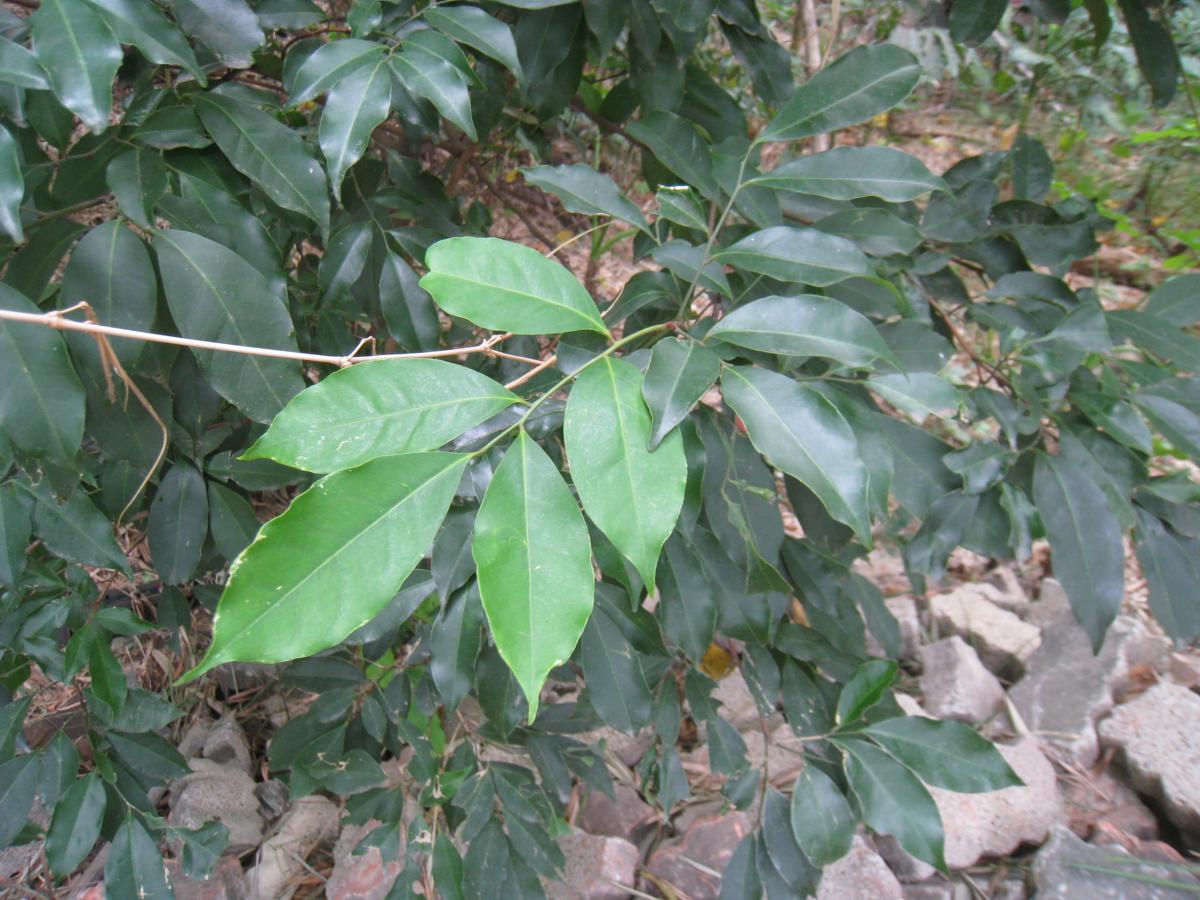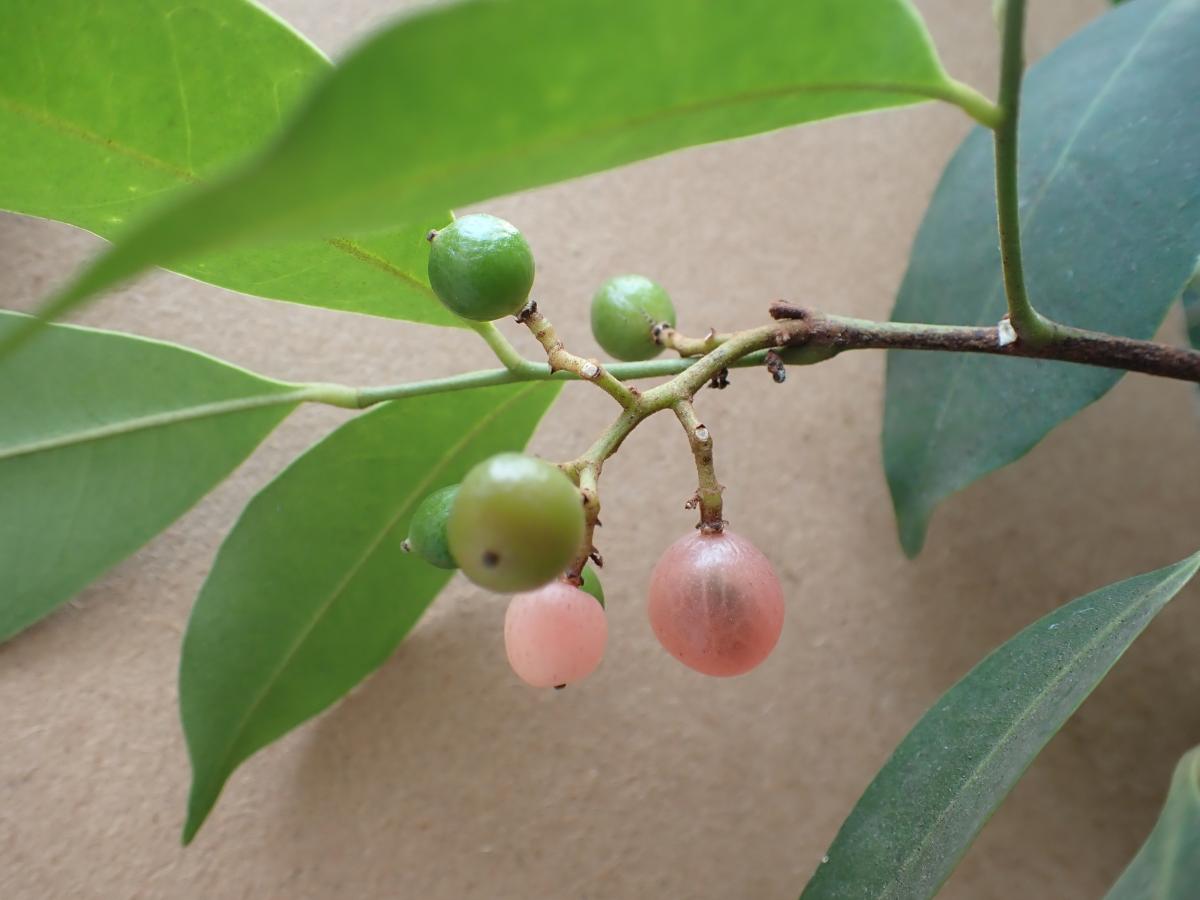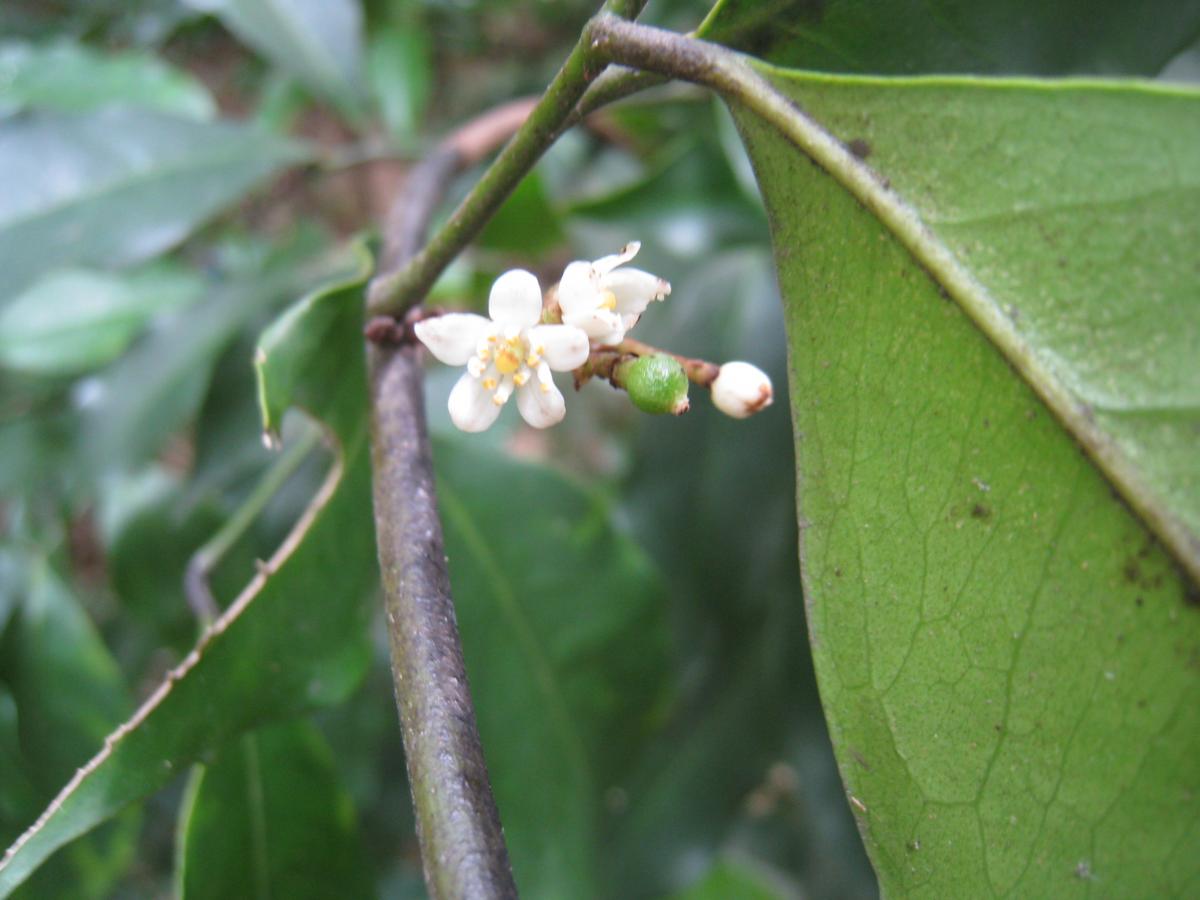芸香科
學名:Glycosmis cochinchinensis (Lour.) Pierre
英名:Malay Glycosmis、Longfruit Glycosmis
零星分佈在臺灣低海拔森林中。石苓就是大家熟悉的七里香,台語植物命名常以「舅」字形容相似的植物,石苓加上舅字變成石苓舅,意指像七里香的植物。花朵微小,成熟的圓形果實晶瑩可愛,半透明的像粉紅色果凍,能吸引鳥兒食用,人也可以吃,但能食用的部位很薄。木材堅硬可製作刀柄等小器具,根和葉還可作藥材使用。
Malay Glycosmis is scattered in low-altitude forests in Taiwan. Its Chinese name, pronounced as “Shiling”, is a well-known species “the Orange Jasmine”. Taiwan’s plants often add the word "uncle" in the name which means they are similar to each other. Shiling uncle means the plant looks like Orange Jasmine. The flowers are tiny, and the ripe round fruits are crystal clear and lovely, translucent like pink jelly, which can attract birds. Edible to people, but the edible part is very thin. The hard wood can be used to make small utensils such as knife handles, and the roots and leaves have medicinal purpose.
石苓舅屬(山桔)屬常綠喬木,原產東亞亞熱帶氣候區,臺灣低海拔森林零星分佈。互生複葉,1小葉或3~5小葉組成的羽狀複葉,葉長橢圓狀披針形或披針形。圓錐花序,白色花瓣4~5枚。漿果圓形至橢圓形,徑約1cm,熟時帶透明淡黃色至粉紅色。
An evergreen tree in the genus Glycosmis, native to the East Asian subtropical climate zone, and scattered in low-altitude forests in Taiwan. Compound leaves alternate while leaflets pinnately compound in 1 or 3-5; leaves oblong-lanceolate or lanceolate. Panicles consist of 4-5 white petals. Berries round to oval in shape and about 1 cm across; transparently pale yellow to pink when ripe.
以半日照生育最好,需種植於排水良好處,澆水不宜過多以避免根腐爛。喜溫暖,對於土質選擇不苛求,但以疏鬆肥沃之土壤為佳。以種子或扦插繁殖。
The plant grows best in partial sun and requires well-drained soils; over-watering will cause root rotting. It prefers warm conditions, and adapts to all types of soils but preferably loose and fertile. Propagated from seeds or cuttings.
可作庭園景觀樹、盆栽果樹,果可食。木材材質堅硬,可製小形器具及刀柄等用途。玉帶蔭蝶以此果實汁液為主食。根和葉可袪風解表、化痰止咳、理氣消積、散瘀消腫。主治感冒咳嗽、食滯納呆、食積腹痛、疝氣痛、跌打腫痛。
A great garden ornamental tree and potted fruit tree. Fruits edible. The wood is hard-textured, suitably used to produce small appliances and knife handles. The fruit is a main food source of Lethe europa pavida. The roots and leaves are used as traditional medicines to expel pathogenic wind and induce sweat, relieve phlegm and cough, disperse qi, stasis and swelling; mainly used to cure cold cough, stagnation of food, abdominal pain due to food accumulation, hernia pain, swelling and pain from bruises.




